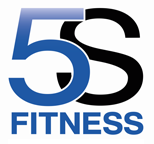Nothing in my opinion looks cooler than a big, heavy snatch! Slick, smooth movement that just exudes power. Amongst all that triple extension and dropping down to meet the catch you have to really analyse your weak points on this classical great. Once again this quick blog is just an insight into common assistance exercises to address common problems, a full list would warrant an entire article in its own right. Clearly the snatch and its bigger brother, the clean, have a lot of moving parts where technical issues and strength imbalances can occur, therefor it is always best to break the exercise down as we do in other major lifts. Put simply the biggest issue stopping you from putting that weight up is not technique, but strength. This is of course assuming you have all the much needed flexibility and mobility, if you don’t have that work on that first rather than trying to add weight!
Snatch Pulls – Snatch Pulls are a big one that not many people seem to do for some strange reason. This movement is exactly the same as the snatch, minus catching the bar. Set up as you would normally, violently thrust the hips forward and launch that weight up to around navel height, or up to mid chest if it is a high pull. This will develop massive strength in the pulling power, just make sure to define the line between big weight and technique breakdown!
Sotts Press – A lot of my assistance exercises are to do with torso stability and being able to maintain position under load. The sotts press does just that. This can be done both snatch specific and clean specific. For the snatch you simply unrack that barbell as if preparing for a back squat, descend all the way into the hole, chest up and press the weight up in a snatch grip from behind the head. You can do this from the front rack in the same manner, but requires way more mobility. You will feel this exercise everywhere, but more so all the way down the deep spinal erectors linking all the way up to the traps. Keeping core tight and maintaining that strong, stable position is key to performing the exercise effectively.
Muscle Snatch – Once you can muscle up heavy weight safely, you will technically lift a lot more. You will be able to compensate and make lifts that fired up all wrong. Strength is key. Perform a regular snatch only this time use none or a very slight extension of the hips to bump the bar up and muscle all the way up to press out. Do not drop down to meet the bar. Pretty much try to snatch as if you would if no one ever taught you how. This will strengthen all the key muscles involved in the pulling groups.
Any Posterior Chain Extension Exercise – Glute Ham Developer, Lying Extensions, 45 Degree Extensions, Reverse Hypers the list goes on… Get these in your program to start seeing significant differences. An athlete is strong in the rear of their body. The hamstrings, glutes and spinal erectors do the majority of the work in shifting all heavy weight. These specially built machines target those areas to great effect and there’s so many ways and variations you can do them. Holding weight, Olympic Bar on shoulders, Jump stretch bands and any combination to name just a few. This will help the muscles drive the bar up and once more, when your at the bottom of the catch, will keep you rigid and stable ready for the recovery phase.
Snatch Balance – Very important lift that I need to work a lot more on. Unrack the bar as if going for a back squat, set your grip into a wide snatch like grip, then there’s two ways in which you can execute this. Number 1, initiate the movement with a slight jump, quickly push out at the same time as dropping down into the bottom position. The 2nd, raise up onto your toes, then as fast as you can slide your feet from under you while pressing the bar up at the same time to land in the catch position. This will work very well for people who struggle to keep their weight on the heels (Me), struggle with maintain the upright position and will work on strengthening the legs for recovery.
There you have it! A few key assistance exercises for the snatch. There is a lot here that goes without saying, such as back squatting, a few coaches argue over the necessity for the overhead squat, trap work and additional back work, aswell as stiff leg deadlifts and RDLS. Note that I haven’t included things like working from the hang or off blocks because I believe that to be part of the main movement itself, nor have I included power snatch as brilliant as it is, your just receiving the bar higher than you would normally so not an assistance exercise as such, more of a main lift. Try these exercises out, see how you get on!
